Found a total of 10000 related content

Mastering CSS Blend Modes and Filters
Article Introduction:Use mix-blend-mode to make text clear and readable on complex backgrounds, such as hero-text setting difference mode; 2. Use filter to achieve lightweight dynamic effects, such as brightness and saturate changes when buttons hover; 3. Use background-blend-mode to create a consistent picture grid style, such as multiply mixing and superimposing gradients and using contrast to enhance visual hierarchy - these are efficient CSS techniques to improve UX, and can achieve dynamic and high-performance visual effects without additional images or JavaScript.
2025-07-31
comment 0
848
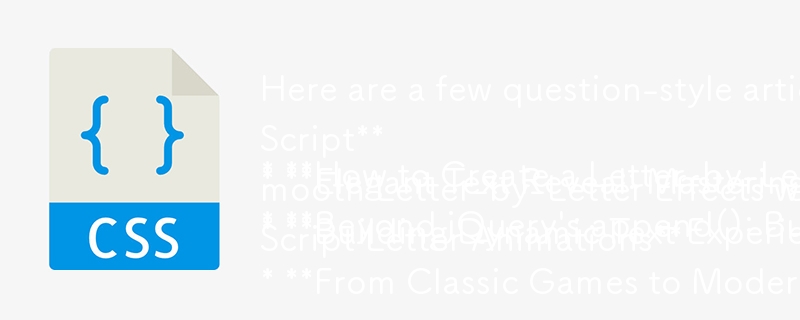
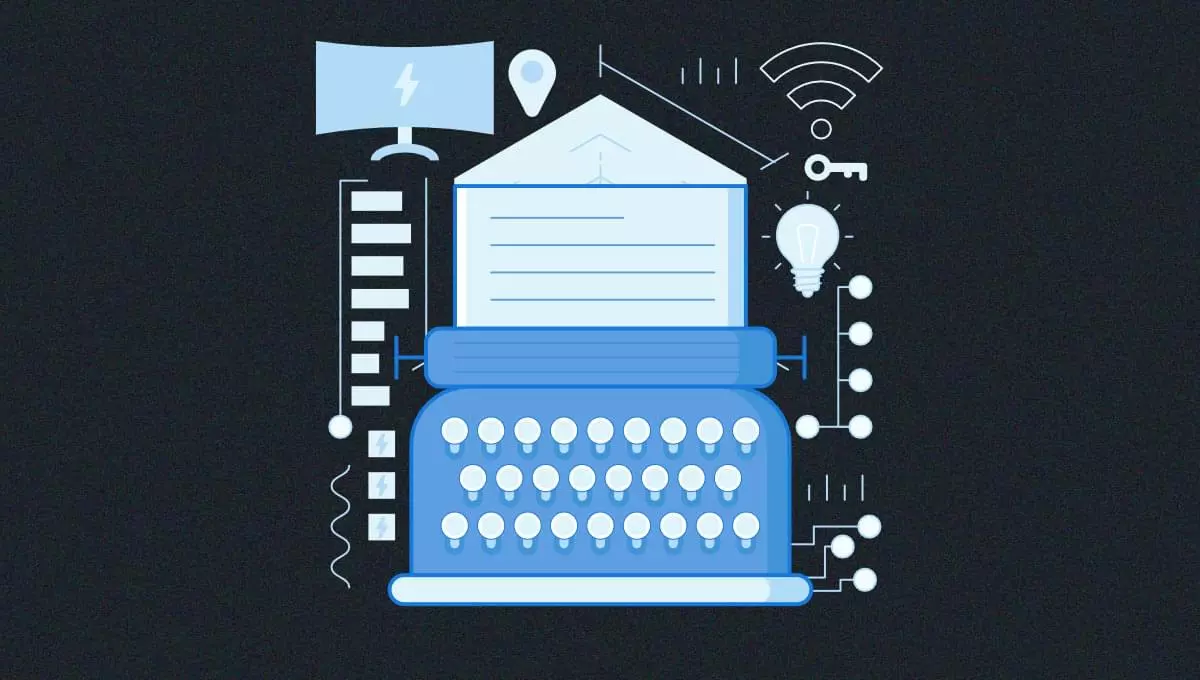
How to Create a CSS Typewriter Effect for Your Website
Article Introduction:Pure CSS creates engaging typewriter text effects
Core points:
CSS typewriter effects make website content more dynamic and attractive by gradually displaying text, and can be used for login pages, personal websites and code demonstrations.
Typewriter effects can be created by using the CSS steps() function to change the width of the text element from 0% to 100%, and animation simulation of the cursor of "photo" the text.
Typing effects can be adjusted by increasing or decreasing the number of steps and duration of the typing animation to accommodate longer or shorter text.
Typewriter effects can be used in conjunction with flashing cursor animations to enhance the effect, and the cursor can be customized by adjusting its border-right attribute, color, flashing frequency, and more.
This article will
2025-02-08
comment 0
804

How do I use the element to preserve formatting in code snippets?
Article Introduction:Elements are used to preserve the original text format, such as code display. When using it, you can directly wrap the content, and you can combine CSS to set background, margins, scrolling and other styles, and at the same time use tags to enhance semantics. Pay attention to avoiding excessive content and character escape problems during dynamic insertion. 1. Use reserved spaces and line breaks; 2. Optimize display effects through CSS; 3. Combined to improve accessibility; 4. Pay attention to content length and dynamic insertion details.
2025-06-21
comment 0
1055

10 Magicial jQuery Text Effect Plugins
Article Introduction:10 magical jQuery text special effects plugins to make your website stand out! jQuery is not only used for menus and animation effects. With jQuery, you can also create attractive text effects and cleverly use text to communicate effectively with users. Through this collection, you can create text gradients, text fly-in effects, text glows, and more. Enjoy it!
Codename Rainbows
We use some JavaScript and CSS magic to apply a two-color gradient for any text. Shadows and highlights can also be applied. This is especially effective in large websites or dynamic content, as it is impractical to create images for each instance in these cases.
source
jQuer
2025-03-07
comment 0
1201

How to highlight text with the tag?
Article Introduction:Use tags to highlight text semantically, often used to identify search results or important content; 2. Custom styles such as background colors, text colors and borders can be customized through CSS; 3. It should be used in contexts with practical significance, rather than just visual decoration to improve accessibility and SEO effects.
2025-08-04
comment 0
700
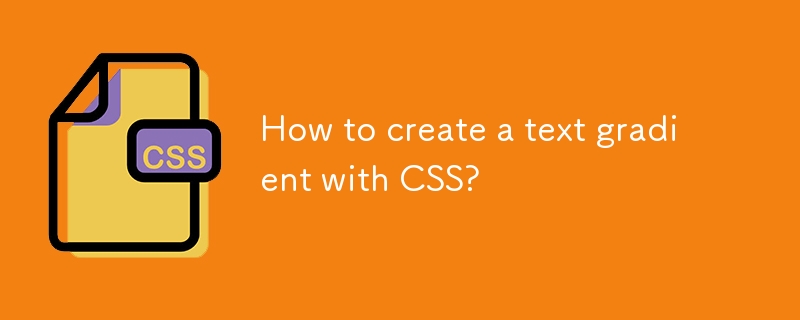
How to create a text gradient with CSS?
Article Introduction:Use background-image and background-clip:text to achieve CSS text gradient effect; 2. You must set -webkit-background-clip:text and -webkit-text-fill-color:transparent to ensure browser compatibility; 3. You can customize linear or radial gradients, and it is recommended to use bold or large text to improve visual effect; 4. It is recommended to set color as an alternative color for unsupported environments; 5. Alternatives can use -webkit-mask-image to achieve more complex effects, but they are mainly suitable for advanced scenarios; this method is simple, has good compatibility and visual
2025-08-01
comment 0
260
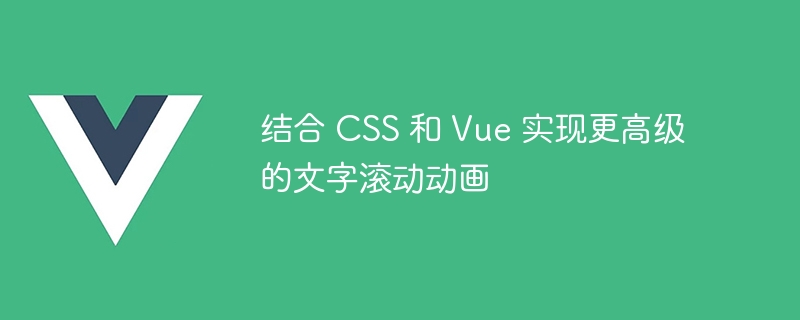
Combining CSS and Vue to achieve more advanced text scrolling animations
Article Introduction:Combining CSS and Vue to enable more advanced text scrolling animations to create responsive and engaging animations. CSS provides scrolling gradients, vertical text scrolling, and neon effects, while Vue provides dynamic control and responsive animation features, including the use of v-scroll instructions and the gsap library. The sample code demonstrates creating animations using Vue responsive features and gsap library, adjusting animation properties based on screen size, and changing text colors to indicate scrolling directions.
2025-04-07
comment 0
914

Exploring Visual Compositing with CSS mix-blend-mode
Article Introduction:mix-blend-mode is an attribute in CSS that controls the way elements and background content are mixed. It allows web page elements such as text, images, etc. to produce a mixed effect similar to Photoshop layer. 1. Common values ??include normal, multiply, screen, overlay, etc.; 2. Suitable for scenes such as text and background fusion, multi-layer overlay, dynamic interaction design, etc.; 3. Pay attention to background dependence, browser compatibility, performance impact and readability issues when using it; 4. Beginners can start by setting background pictures, adding text or color blocks and trying different blending modes.
2025-07-09
comment 0
264
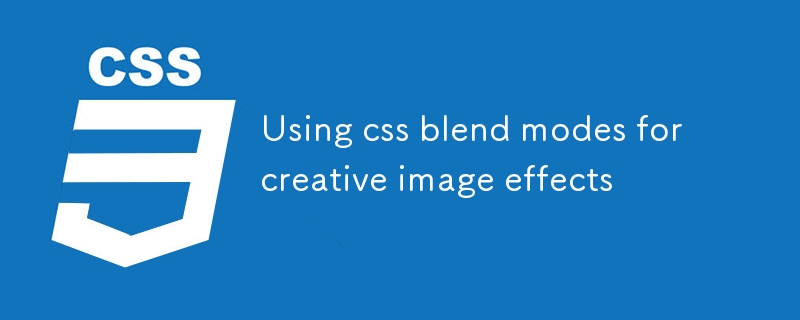
Using css blend modes for creative image effects
Article Introduction:CSS hybrid mode realizes creative image effects through mix-blend-mode and background-blend-mode properties. 1. Mix-blend-mode controls the mixing of elements and background, such as using the difference value to allow text to penetrate the picture to display; 2. Background-blend-mode controls the mixing of background layers, such as overlaying gradient tones; 3. Pay attention to browser compatibility when using it. Safari and Chrome support is good, but IE does not support it; 4. Use the isolation attribute to avoid hierarchical interference and ensure that the parent container has content support for the mixing effect.
2025-07-10
comment 0
711
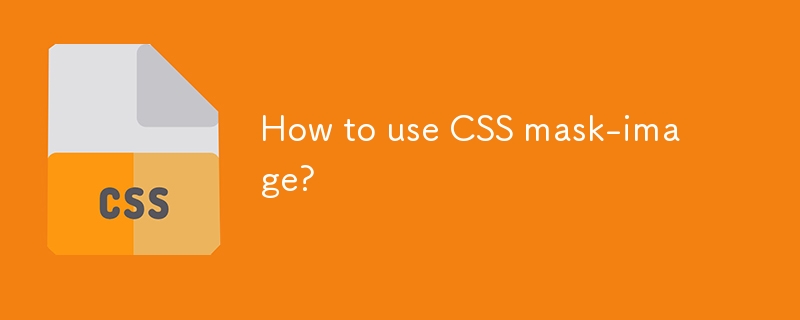
How to use CSS mask-image?
Article Introduction:The mask-image attribute of CSS controls the visible area of the element through pictures or gradients, achieving visual effects such as fading, hollowing out, and image cropping. 1. Use mask-image to set the mask image, white display, black hidden, gray translucent; 2. It is recommended to use PNG format, and use mask-repeat and mask-size to control the mask direction and size; 3. Add -webkit-prefix to improve browser compatibility; 4. It is often used in scenes such as image fading, text hollowing, dynamic mask transition; 5. Pay attention to the mask image scale, element background settings and Safari compatibility processing. Mastering the combination of black, white and gray control, compatibility processing and animation can achieve attractive visual effects.
2025-07-18
comment 0
160

Implementing Background Effects with the CSS backdrop-filter Property
Article Introduction:Backdrop-filter is an attribute in CSS that applies visual filter effects to the content behind an element. Unlike ordinary filters, it does not affect the element itself, but acts on the content visible through the element. 1. Commonly used for frosted glass style UI, pop-up background blur and dynamic button background processing; 2. When using it, it must be combined with translucent background colors such as rgba() or hsla(); 3. Some browsers need to add -webkit- prefix to ensure compatibility; 4. Large-scale use should be avoided in terms of performance and filter complexity should be controlled, especially on mobile devices.
2025-07-07
comment 0
241
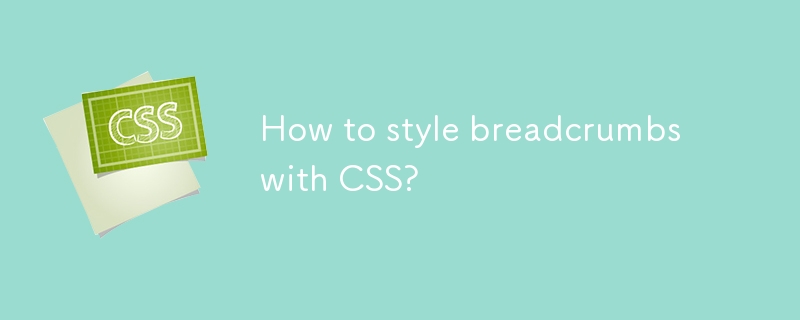
How to style breadcrumbs with CSS?
Article Introduction:Use semantic HTML structures, including, and aria-current attributes to ensure accessibility; 2. Add dynamic separators (such as/or>) through the ::after pseudo-element of CSS to avoid hard coding in HTML, and set hover effects and current page styles for links; 3. Use CSS custom attributes (such as --separator-color) to improve theme flexibility and facilitate reuse of different scenes; 4. Select modern styles such as capsule backgrounds, dots or arrow separators to enhance visual effects; 5. Set flex-wrap, white-space and text-overflow for responsive designs to prevent small screens from overflowing or line breaking confusion; finally, semantic tags
2025-07-30
comment 0
821

Configuring Dynamic Compression for Appropriate Content Types in IIS
Article Introduction:When configuring dynamic compression in IIS, selecting content types reasonably can improve performance. First enable the dynamic compression module, install and configure web.config or IIS manager through the server manager. Secondly, set appropriate content types, such as HTML, CSS, JavaScript, and JSON, text content is suitable for compression, while pictures and videos are not suitable. Finally, pay attention to the impact of client compatibility and performance, monitor CPU load, client support status and small file compression effects, and adjust the configuration based on actual traffic to obtain the best benefits.
2025-07-04
comment 0
650

What are WeChat Moments and how to use them?
Article Introduction:Moments is a social function of WeChat, used to share life, pictures, texts, and understand friends' dynamics. 1. It can share daily life, express mood, promote content and view other people's updates; 2. When posting to Moments, you can add pictures, videos, text descriptions, locations, friends and set visible ranges. You can long press and hold the camera icon in pure text; 3. Privacy settings include disclosure, partial visible, and not to show to anyone, and can manage previous Moments and block specific people; 4. Other functions include video account linkage, dynamic reminders, setting visible deadlines, custom background images, and cold knowledge that interacts with recommended effects.
2025-07-08
comment 0
556

Describe the CSS `mix-blend-mode` property
Article Introduction:mix-blend-mode is an attribute in CSS that controls the mixing method of element content and background, and realizes color interaction effects through different blending modes. Common modes include multiply (dark, suitable for dark element overlay), screen (bright, suitable for light element overlay), overlay (high contrast overlay), and difference (dynamic inversion). When using it, you need to ensure that there is visible content behind the elements and pay attention to performance, readability and compatibility issues. For example, set .element{mix-blend-mode:multiply;} to apply the effect.
2025-08-01
comment 0
897
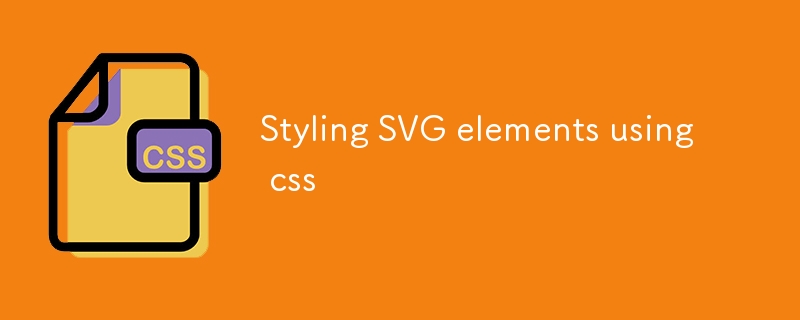
Styling SVG elements using css
Article Introduction:It is basically feasible to add styles to SVG elements, but you need to pay attention to their characteristics. 1. Inline SVG can be controlled by class name, tag name, and ID, such as setting properties such as fill, stroke, and support dynamic effects; 2. External SVG cannot be directly controlled by page CSS, solutions include inline introduction, SVG internal writing style or JavaScript injection; 3. SVG has unique properties such as fill and stroke, and traditional CSS attributes such as background-color are not applicable; 4. Using CSS variables can improve flexibility, facilitate unified management of colors and sizes, suitable for theme switching and reuse styles.
2025-07-08
comment 0
577

How to use the style attribute for inline CSS?
Article Introduction:Use the style attribute to directly apply inline CSS on HTML elements, which is suitable for quick testing, JavaScript dynamic styles and email templates; 1. Add style attributes and write CSS declarations in property:value format, separated by multiple declarations by semicolons; 2. It is often used to set text color, background, font, size, border, inner and outer margins, etc.; 3. Pay attention to the high priority of inline styles, which are difficult to cover, and cannot be reused, which is not conducive to large-scale projects maintenance; therefore it is recommended to only be used for small changes or dynamic updates at one time, rather than overall page design.
2025-07-31
comment 0
157
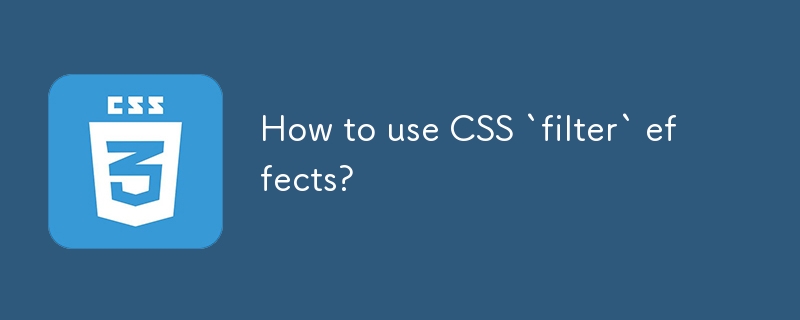
How to use CSS `filter` effects?
Article Introduction:The CSS filter effect can adjust the appearance of web page elements through a line of code, and supports blur, grayscale, brightness and other effects. Pay attention to the syntax structure and browser compatibility when using it. Its basic syntax is to call functions such as grayscale(), blur(), brightness(), etc. through filter attributes, and can be used superimposedly, such as "filter:grayscale(30%)brightness(80%)blur(2px);". Applicable scenarios include background blur, disabled status identification, screen adaptation color adjustment and creative color transformation, and dynamic effects can be achieved through the:hover pseudo-class. In terms of browsers, modern browsers generally support it, but older versions may require prefixes, and attention should be paid to
2025-07-19
comment 0
925

How to use the HTML style attribute for inline CSS
Article Introduction:Use the style attribute to apply inline CSS directly on HTML elements, which is suitable for quick style settings or dynamic overwriting styles, but for easy maintenance, it is usually recommended to place CSS in external files or tags. 1. Basic syntax: add style attributes to elements, write CSS declarations in the form of property:value, and multiple declarations are separated by semicolons without braces; 2. Common use cases include setting text color, background color, font, spacing and layout, etc.; 3. The usage scenario is single-shot, JavaScript dynamic generation or temporary overwriting style; 4. Avoid using multiple elements, large projects, or when you need to separate structure and presentation; 5. Inline styles have high priority and will overwrite external style rules; 6. Use skills packages
2025-08-03
comment 0
417


















